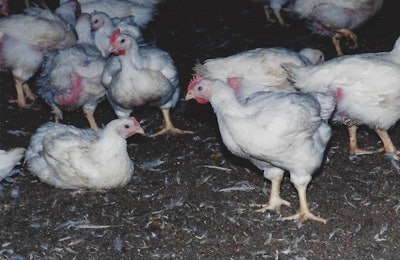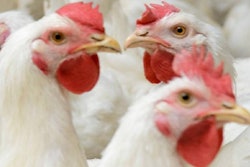
Salmonella in broiler intestines has been globally recognized as a food safety hazard. However, this is not the whole story. Investigations at the University of Maryland, College Park have disclosed that the litter may also be “sick.”
High levels of Salmonella were repeatedly found on litter surfaces where air flow or ventilation was negligible or stagnant. Such Salmonella contamination can spread further into the food chain via feathers, and feather follicles which generally defy decontamination.
Ventilation that provided litter-surface air flow velocities of 3 feet per second when relative humidity was low (e.g. 70 percent); and 5 to 6 feet per second when humidity was high (e.g. 90 percent) significantly reduced this contamination.
The role of litter-surface “health” should always be considered in projects aimed at protecting food products originating from broilers.
More detail on the Maryland work was presented in Watt Poultry USA, December 2007, pages 48 to 58. This article emphasizes that farm contamination reaching processing plants likely has its most potent source in “hot spots” of Salmonella and E. coli multiplication directly in the litter. These hot spots were locations with negligible or stagnant air flow. Corners of houses were found to be common bacterial multiplication hot spots in and on the litter surface. Poor air flow along walls and in eddies of air flow below fan vents were also found to be additional problem areas.
The article also describes a frequently unknown correlation between E. coli counts and Salmonella counts in litter (M. S. Myint et al., International Journal of Poultry Science 4:947-954). As counts for coliforms are more easily obtained than those for Salmonella, companies may opt for coliform counts on litter surfaces as a time- and work-saving consideration when assessing litter surface ventilation practices for Salmonella control.
















